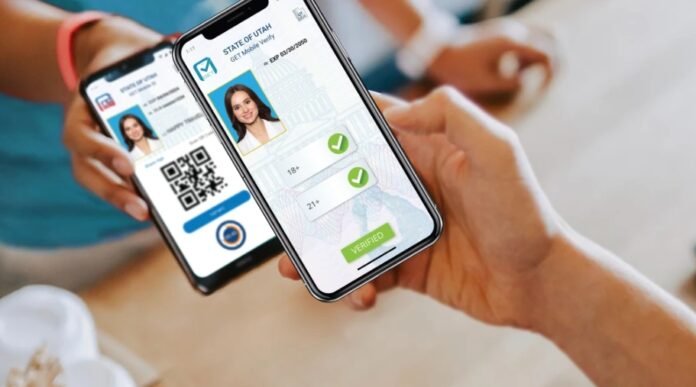As more U.S. states roll out digital driver’s licenses (DLs) or seriously consider adopting them, the financial sector faces mounting pressure to update its systems for identity verification. The rapid advancement of digital IDs is transforming the way individuals interact with institutions, and banks are now at a pivotal moment—grappling with how to incorporate mobile IDs into their authentication processes. This shift has the potential to streamline verification procedures, increase security, and offer consumers greater convenience, but it also raises challenges that must be addressed for the broader adoption of digital identity.
The Digital Revolution of ID Verification
Digital driver’s licenses are quickly gaining traction across the country, with several states already implementing pilot programs or fully deploying mobile versions of these traditionally physical documents. In essence, a digital driver’s license serves as an electronic version of a person’s government-issued ID, accessible through a secure mobile app. It provides the same information as the physical card, such as name, photo, address, and date of birth, but in a more portable and tech-friendly format.
The rollout of digital licenses aligns with the growing trend toward digitization across various sectors, from healthcare to banking. Digital IDs are particularly appealing for their convenience; they eliminate the need for physical cards, making them easier to carry and less susceptible to being lost or damaged. More importantly, they can enhance security by leveraging biometric data and encryption technologies to ensure that the individual using the ID is who they claim to be. Given these features, it’s no surprise that many states see digital DLs as the future of identity verification.
Banks and the Challenge of Mobile ID Integration
With digital DLs becoming more common, banks and financial institutions are being compelled to rethink their identity verification processes. Traditionally, banks have relied on physical documents—like a driver’s license or passport—alongside personal data to authenticate customers. However, as mobile IDs gain legitimacy, banks must now consider how to integrate these digital forms of identification into their verification workflows.
The challenge is multifaceted. For one, banks will need to ensure that their existing systems can recognize and authenticate digital IDs securely. While mobile IDs offer numerous advantages, they also introduce new risks, such as the potential for identity theft or fraudulent use of digital licenses. Without robust safeguards, mobile IDs could become a vector for cybercriminals to exploit.
To effectively accept and process digital IDs, banks will need to adopt advanced authentication methods that combine digital license verification with other security protocols, like two-factor authentication (2FA) or biometric verification. This integration would create a more secure and seamless experience for customers, ensuring that mobile IDs are not just a convenience but a safe and reliable tool for identity verification.
Potential Benefits of Mobile IDs for Banks
When implemented correctly, digital driver’s licenses could significantly improve the banking experience for both customers and institutions. One of the most immediate benefits is convenience. Digital IDs enable customers to prove their identity quickly and securely from their mobile devices, reducing the need for physical interactions at bank branches. For banks, this means fewer administrative burdens and the ability to serve customers faster, particularly in online or remote settings.
Additionally, mobile IDs could help reduce fraud. Unlike physical cards, digital IDs can be more difficult to counterfeit, as they can be encrypted and linked to biometric data, such as facial recognition or fingerprints. This added layer of security could help banks better protect themselves and their customers from fraud, particularly in the wake of increasing digital transactions and remote banking activities.
Moreover, digital IDs could streamline the onboarding process for new customers. In the past, opening a bank account required customers to present physical documents in person. With a digital ID, this process can be completed entirely online, reducing friction and attracting tech-savvy consumers who prefer conducting their financial activities from their smartphones.
The Road Ahead: Regulatory and Technological Hurdles
Despite the advantages, the widespread adoption of digital driver’s licenses in the banking sector is not without its challenges. One of the primary hurdles is regulatory compliance. Financial institutions are heavily regulated, and any new technology they adopt must meet stringent security and privacy standards. Digital IDs, while secure, raise questions about how to ensure they are compliant with existing laws governing personal data and privacy protection.
As more states issue digital DLs, federal regulators will need to step in and create a consistent framework for verifying and accepting mobile IDs across state lines. This would prevent a patchwork of state-specific regulations from hindering the development of a unified digital ID system. Additionally, regulators must ensure that digital licenses meet the necessary standards for identity verification in various contexts, from banking to voting to healthcare.
Technologically, banks will also need to invest in new infrastructure to support mobile ID verification. This means upgrading their existing systems to incorporate secure scanning and verification of digital IDs. Such upgrades could be costly and time-consuming, but they are essential for ensuring that banks remain competitive in a rapidly changing digital landscape.
Conclusion: A Future of Seamless and Secure Banking
The introduction of digital driver’s licenses marks a significant step forward in the evolution of identity verification. As more states adopt digital IDs, banks will be under increasing pressure to adapt their systems to accommodate these new forms of identification. By embracing mobile ID technology, banks have the opportunity to enhance security, streamline customer service, and improve the overall banking experience.
However, to fully realize the benefits of digital driver’s licenses, banks must address the technological, regulatory, and security challenges that come with this transition. If done right, mobile IDs could play a pivotal role in shaping the future of banking, providing consumers with a more convenient, secure, and seamless way to access financial services. The ball is now in the banks’ court to embrace this shift and stay ahead in the digital age.




